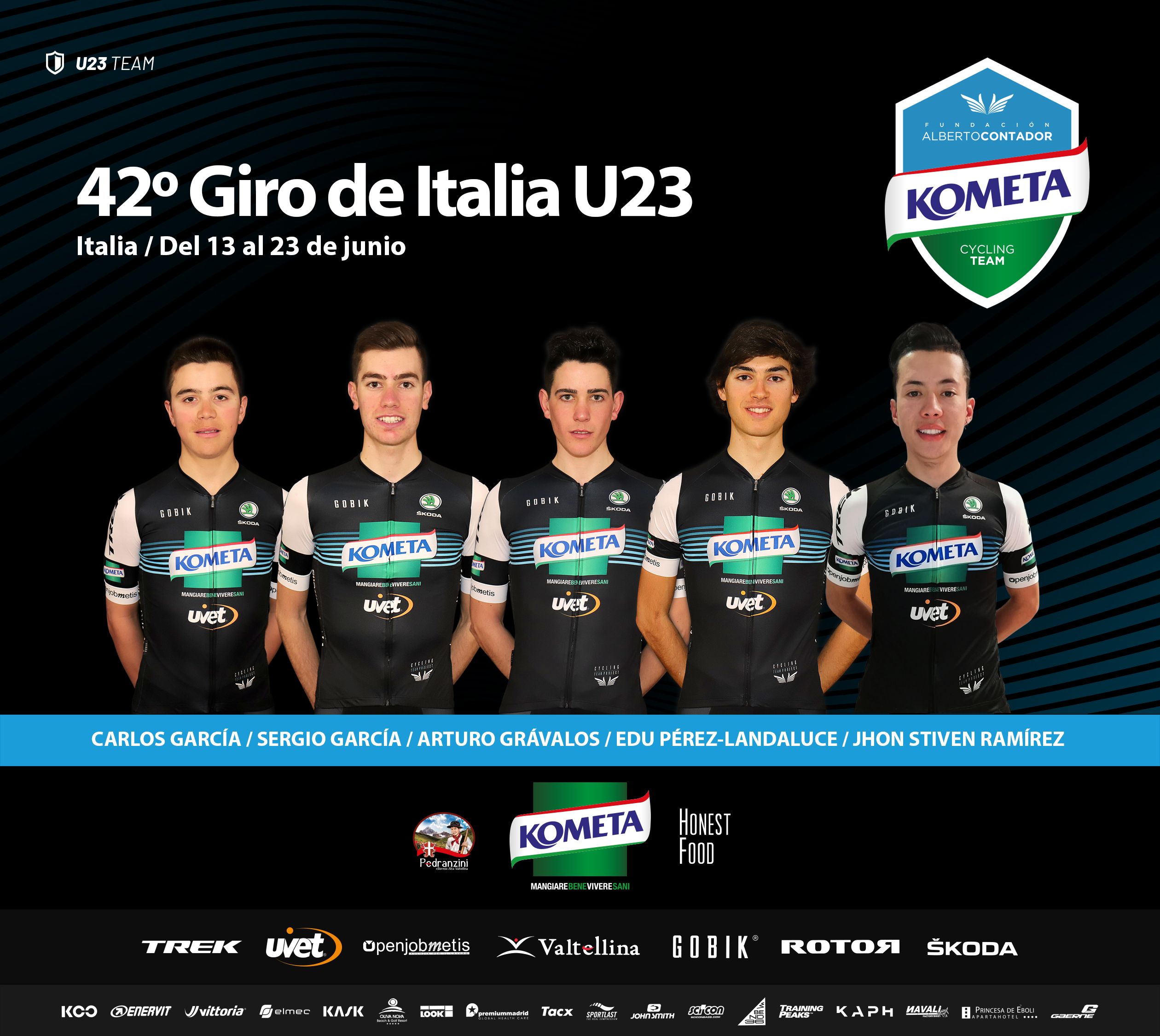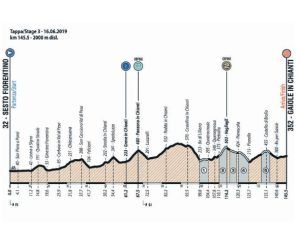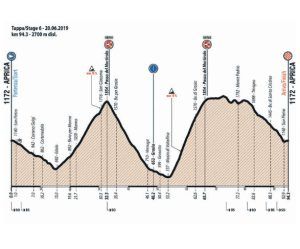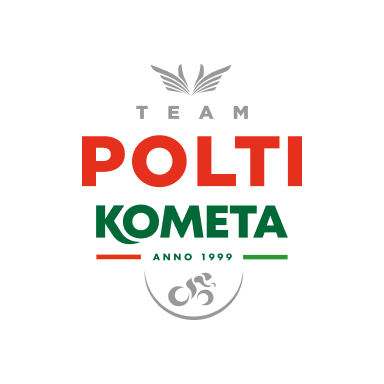Sterrato, double pass through Mortirolo, final in La Marmolada… The Kometa Cycling Team sub23, before the experience of a severe Giro Baby

42º Giro d´Italia Giovani Under 23
From 13 to 23 June
Recovered in 2017 after a period of four years without being disputed, the historically known as Giro Baby, or GiroBio, has been consolidated in the blink of an eye as the stage where the riders who will be, in one way or another, the great protagonists of the sport of cycling in the years to come are glimpsed. Other events in Europe could fight for the title, but due to the number of stages and the routes they make, the Giro is the great race of tomorrow’s champions. Such has been the determination of different institutions to return to a race that in its last two editions has crowned two Russian cyclists, Pavel Sivakov in 2017, Aleksandr Vlasov in 2018, victories that have given continuity to the Soviet successes of the editions of the mid-eighties.
The change of dates of the Tour of Hungary has favoured that for this year the U23 team of the Alberto Contador Foundation takes up the baton of the continental formation, present in the pack of the Giro Baby 2018. The Magyar race and the Giro d’Italia under23 overlap several days, which has made possible the concretion of an invitation that has become one of the great challenges of the season. Four Spaniards (Carlos García from Madrid, Sergio García from Andalusia, Arturo Grávalos from La Rioja and Eduardo Pérez-Landaluce from Asturias) and a Colombian (Jhon Stiven Ramírez) are the five cyclists selected by Rafa Díaz Justo and the trainer Carlos Barredo to face such an intense and demanding challenge. A test that brings together 31 formations in total. The elite under23.
 “Due to the route itself, the accumulated hardness, with a lot of unevenness, and the volume of competition, because they are many days in a row, it is going to be the hardest race the runners face”, explains Carlos Barredo from Gijón. “It is going to be essential to arrive very rested, fresh, as well as with a good psychological preparation. We have worked on the volume and the difference in level, and we have tried to make the best possible set-up. With Carlos, Sergio, Arturo, Edu and John we have made three work groups based on the previous competitions, because some competed in Bidasoa and l´Isard, others only in the French race and finally others both in Bidasoa and in the Vuelta a Navarra. We are looking for them to reach the quality point in these competitions, while both before and after facing them there has been a volume of work in fundamentally medium rhythms, as well as the development of strength”.
“Due to the route itself, the accumulated hardness, with a lot of unevenness, and the volume of competition, because they are many days in a row, it is going to be the hardest race the runners face”, explains Carlos Barredo from Gijón. “It is going to be essential to arrive very rested, fresh, as well as with a good psychological preparation. We have worked on the volume and the difference in level, and we have tried to make the best possible set-up. With Carlos, Sergio, Arturo, Edu and John we have made three work groups based on the previous competitions, because some competed in Bidasoa and l´Isard, others only in the French race and finally others both in Bidasoa and in the Vuelta a Navarra. We are looking for them to reach the quality point in these competitions, while both before and after facing them there has been a volume of work in fundamentally medium rhythms, as well as the development of strength”.
Carlos García sums up very well the common feeling of illusion and desire with which the Kometa Cycling Team under23 travels to Italy: “The truth is that it will be the first time I will compete in a ten-day race and it is an incredible motivation”. “I’m really looking forward to one of the most important races in the world”, adds Sergio García, who has worked these days in the aesthetic climbs of the Puertos de Las Palomas and El Boyar in Cadiz. “We have been doing our best these months to be able to arrive as best as possible”. “I’m really excited, it’s going to be a very nice experience. Sure. The preparation has been quite good and I am confident that we will play a great role. I want to make the most of the Giro. And of course I also want to learn”, says Colombian Jhon Stiven Ramírez.
Ten stages, with another rest in between, make up a menu that totals 1,169 kilometers and has very demanding mountain difficulties. The corsa rosa will start with the only time trial of this edition, a prologue of 3.3 kilometers with no more obstacle than the seven curves that will mark out a circuit for very powerful runners. And then, a succession of difficulties that will grow in crescendo after the rest day, scheduled for Tuesday 18. The Passo delle Force, a level of third to ten of the goal of the second day of the race, will be the prelude to a marathon stage with a complicated start, the third day, and a very complicated fraction that presents five stretches of sterrato. “No day leaves you a respite and in the third stage we have this kind of Strade Bianche that will be very hard,” says Carlos Garcia. The fourth stage, the fifth day of the Giro, involves the first high finish of the race: the Tuscan Monte Amiata, just over 13 km very constant, with an average percentage of around 7%, in the context of a stage with more than 3,500 meters of difference in level.
 After the ‘giorno di riposo’, the race returns to the asphalt with a new high finish on a finish that was already on the course last year: Passo Maniva. A prototypical uniport stage after which comes one of the most awaited days: a not excessively long stage, less than 100 kilometres, which will start and end in Aprica and presents a double ascent of Passo della Foppa, much better known as the Mortirolo. First by Monno (12.7 km at 7.6%); then by Mazzo di Valtellina (12.4 km at 10.5%). In 95 kilometers, 2,600 meters of accumulated slope. “Although any stage of the Giro will be a good opportunity, if I had to choose a stage it would be this one. It’s very hard. Mortirolo is a port that impresses. And it has to be incredible when we are suffering there”, admits Carlos García. “It’s the one that caught my attention the most, I’m especially excited to be able to climb it”, agrees Sergio García.
After the ‘giorno di riposo’, the race returns to the asphalt with a new high finish on a finish that was already on the course last year: Passo Maniva. A prototypical uniport stage after which comes one of the most awaited days: a not excessively long stage, less than 100 kilometres, which will start and end in Aprica and presents a double ascent of Passo della Foppa, much better known as the Mortirolo. First by Monno (12.7 km at 7.6%); then by Mazzo di Valtellina (12.4 km at 10.5%). In 95 kilometers, 2,600 meters of accumulated slope. “Although any stage of the Giro will be a good opportunity, if I had to choose a stage it would be this one. It’s very hard. Mortirolo is a port that impresses. And it has to be incredible when we are suffering there”, admits Carlos García. “It’s the one that caught my attention the most, I’m especially excited to be able to climb it”, agrees Sergio García.
With an eighth stage designed to give a new chance to the fast men if the leaks do not prevent it, the last two days of the Giro Baby return to the mountains. The ninth stage, with a high finish in a gentle climb to Falcade that will be preceded by the chained long Passo Cereda and Forcella Aurine. The final day once again welcomes an invention: if in 2018 it was a time trial in which the runners started to compete according to the same time that separated them in the general classification, on this occasion it is a day in line of less than 40 kilometres that presents the particularity of finishing at the top of Passo Fedaia, much more famous as La Marmolada. From Caprile there are almost 14 kilometres of ascent: in the last five kilometres the slope never drops below 10.6%.
“Being able to be in the Giro is a dream come true”, says Sergio García. “Sincerely we can play a good role in the strongest stages”, confides Jhon Stiven Ramírez. “In the end, with all the level there is, thinking about the overall is objectively difficult. But we want to play a good role, let ourselves be seen, be competitive and from there everything will be welcome. We’ve been thinking about this race all year, we’re going to put all the desire in the world and enjoy it”, concludes Carlos Garcia. The Giro arrives, the great challenge of the season arrives.
The route.
13 June: Riccione-Riccione (3.3 km).
14 June: Riccione-Santa Sofia (143.2 km).
15 June: Bagno di Romagna – Pescia (173.6 km).
16 June: Sesto Fiorentino – Gaioli in Chianti (145.5 km).
17 June: Buonconvento – Monte Amiata (140.2 km).
18 June: rest day.
19th June: Sorbolo – Passo Maniva (158.3 km).
20 June: Aprica – Aprica (94.3 km).
21 June: Dimaro-Folgarida – Levico Terme (137.1 km).
22 June: Rosà – Falcade (133.6 km).
23 June: Agordo – Passo Fedaia (39.9 km).


































